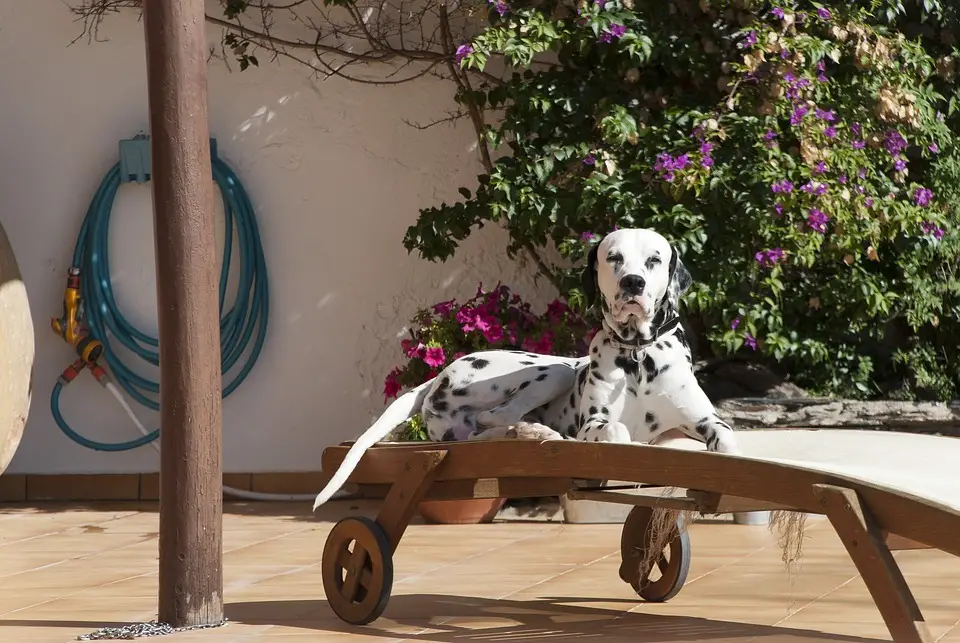While the City of Zagreb is dominated by well looked-after small ‘apartment dogs’ such as Lhasa Apsos, Pomeranians, Yorkshire Terriers and mongrels consisting of genetic mixes of everything from the Jack Russell to the Pug, the Dalmatian coast is unfortunately dominated by stray cats and the apparent total inability to understand why spaying and neutering one animal can prevent the suffering and disease of litter after litter of kittens who didn’t ask to be born.
I’ll be frank, you’re going to see many stray cats wandering the streets all along the coast. Dalmatia, at least for the most part, and there are of course exceptions, still hasn’t quite cottoned onto the fact that foreign visitors typically adore cats and do not see them as ravenous pests or walking vectors of disease to be shunned away into dark corners somewhere. I’ll get into that more later as it’s something that I am passionate about as an animal lover and I don’t want this to just be me on my soapbox banging on about fleas and intestinal parasites.
Let’s start with the basics – Can I bring my pet with me into Croatia?
Speaking generally – Absolutely. Yes. There are also opportunities for your pets to have a great time while in Croatia, including swimming, trekking, or doing anything else you and your pet enjoy doing. By ‘pet’, I’m assuming dog here, as I highly doubt your cat enjoys diving off rocks into the sea, but maybe you have an outlier. Or a Bengal tiger.
One thing that does unfortunately seem to bypass some people and which is very dangerous, is bringing your pet to Croatia when it is boiling hot. Croatia can get too hot even for humans who have a choice about turning on the air conditioner, putting it on turbo mode, closing the blinds or having a nap during the particularly harsh afternoon hours. Pets don’t get that choice and the amount of people who continue walking their dogs in 30+ degree heat is infuriating to see. So, a word to the wise: If you plan on bringing your pet to Croatia with you, you’d do well to avoid the peak tourist season (that would be late June, July and August) or at least try to avoid the most popular tourist destinations. It tends to be extremely hot and very crowded here during that wildly busy summer period, and dogs won’t appreciate walkies when their paws are burned and when they succumb to heat stroke which can and does kill them. While this is true for all dogs, if your dog has spent their life in the UK, Norway or indeed anywhere else in Northern Europe, the heat will be an additional shock to their system that they won’t have a chance in hell of knowing how to cope with.
Transporting a pet to and from Croatia
The rules and regulations regarding the entry of pets to the Republic of Croatia are what you’d expect from any European Union (EU) member state. Pets must have a microchip, have a valid pet passport or authorised certificate, and this must confirm their clean bill of health, and they absolutely MUST be vaccinated against rabies.
For pets younger than three months, things are somewhat more complicated, but you shouldn’t really be travelling with an animal that young. All the aforementioned rules are valid for the non-commercial entry of animals to Croatia (under five individual animals), for low-risk countries, and are valid for dogs, cats, birds, rabbits, ferrets and some other species.
There is a bylaw which defines which border crossings are permitted for animals to enter the country, but it includes almost all major border crossings in Croatia, including ports and airports, so you shouldn’t worry about that, as it is highly unlikely you’ll find yourself crossing the Croatian border at any of the border crossings that aren’t included in that bylaw.
Similar rules apply for when an animal is leaving Croatia and going to a different country. Your pet must be able to be clearly identified through its microchip and be vaccinated against rabies. Please note that these are Croatia’s own rules for animals exiting the country, and it is entirely possible that any country to which you plan to bring your pet might have more stringent rules of its own in place, so if you choose to take your pet with you on your onward travels from Croatia, please make sure you know precisely what the authorities of the country you’re going to need from you in order to make sure your pet has a smooth journey and a safe arrival to their destination.
Attitudes towards pets and domestic animals in Croatia
I’ll be frank (as I was before), there are people, particularly down in Dalmatia, who for some unknown reason cannot grasp that cats are pets which require our love and care. There are still enormous issues with spay and neuter programmes not being the absolutely obvious thing to implement, and there are sadly situations in which cruel individuals poison cats and allow them to die horrific and drawn out deaths. While this is illegal in Croatia, it is rare that the culprits are ever found or punished.
There is also an awful practice of dumping hunting hounds which are too old to keep up, injured, or aren’t fulfilling their purpose anymore. Tourists coming across confused, dehydrated and frightened hounds which have been abandoned in the middle of nowhere (often in the Dalmatian hinterland) or running in and out of traffic on busy roads isn’t an uncommon occurrence. And while litters of helpless kittens too young to be away from their mother being dumped in bins (yes, seriously) are still very much a reality which is dealt with by selfless animal rescue volunteer organisations and vets, over the past several decades, the situation has gradually improved.
There are certain cities, towns and municipalities in different areas of Croatia which now run fully or semi funded spay and neuter programmes, so the owner of the animal in question isn’t charged. Others run ‘actions’ where the owners of dogs kept outside chained up are severely fined. There are even checks for microchips on pet dogs out on the street from time to time. There are vets who will selflessly treat injured strays and many organisations and shelters which will feed, foster and adopt out strays. It would be a lie to say that Croatia has reached ‘Western standards’ of animal care, and the situation is unfortunately somewhat similar in just about all Mediterranean countries, but have things become far better on the whole? Yes.
Pets and the conditions in which they live across Croatia have gotten better. In most places in Croatia now, both dogs and cats live cushy lives as well-fed, fully vaccinated, and sometimes totally spoiled furballs.
While generations of local cats line the old stone walls, sit waiting in harbours for fishermen they have ingratiated themselves with to give them some sardines and laze around in the sun, in most places in Croatia it is against the local bylaws to let dogs roam around freely without being on a leash. This isn’t really enforced in smaller areas, and to be perfectly honest, you’re far more likely to meet a local dog who belongs to so and so who everyone knows taking himself for a quick wander and a swim before going home than you are Cujo. This is especially the case in smaller Dalmatian towns and villages. And, yes, we’ll get back to the topic of Dalmatians and their origins a bit later on.
Laws regarding pets in Croatia
We’ve already mentioned the most important laws regarding pets in Croatia, such as the fact that they should have a microchip and they should have all of the necessary vaccinations and proof of such (for dogs, the most important one of all remains the rabies vaccine). While they are the main things to keep in mind, there are some other national laws regarding pets to consider as well. The most notable one concerns so-called ‘dangerous breeds’. This refers to dogs from the group of breeds discriminated against by many countries solely because of idiots with two legs which fall under the ‘(pit) bull terrier type’ category. Any dog lover will tell you that the idea of a dog breed being inherently ‘dangerous’ is a completely idiotic notion, but unfortunately this breed discrimination does continue.
Opinions aside, there are unfortunately some special conditions for keeping ‘(pit) bull terrier type’ breeds. This includes the provision that the dogs considered to belong to this particular breed type can only enter Croatia if they have a pedigree issued by a member of the International Canine Federation (Fédération cynologique internationale). These dogs should always be on a leash when outdoors and have a muzzle on at all times while in public.
While there are areas and bylaws which prescribe where your dog can be off the leash, you do generally need to keep your dog on a leash in more populated areas (unless it’s a dog park). When it comes to taking your dog with you to a restaurant or a cafe, do ask if animals are permitted. Generally (and especially in bars and cafes) the answer will usually be an emphatic ‘Yes’, and your four-legged companion will also likely receive a bowl of water, especially in warm weather.
What about finding accommodation which accepts pets in Croatia?
First things first, don’t assume that all accommodation units will be fine about accepting your pet. You do need to check and if you’re booking online through a platform such as Booking.com or Airbnb, you’ll find that whether or not pets are welcome is typically clearly highlighted. On top of that, almost all campsites across Croatia are very pet-friendly. There are only a small handful that have a strict pet-free policy, so they’re very easy to avoid. If you’re going about booking something in a less common or straightforward way, make sure to ask about your dog, cat, bird, hamster, or whatever pet you have.
When it comes to actual hotels, the situation can become a little bit more complex so make sure you explicitly ask, and also let them know if your pet (particularly if the animal in question is a dog) is a large breed. Some hotels have very vague guidelines about ‘smaller pets’ which won’t be made clear unless you ask about them specifically. Although both are technically ‘smaller pets’, there’s still a rather big difference between a guinea pig and a West Highland Terrier. If the answer is no, don’t be put off. Do shop around. You’ll definitely find somewhere more than happy to accommodate your furry family member.
Things to note
There are handy websites that can help you navigate Croatian accommodation facilities and private landlords, so do look for the ones that are happy to house you and your pet: while probably not completely up-to-date, you can certainly get a feel of the number of options there are out there by visiting Povedi me/Take me.
Taking pets on public transport
More often than not, it’s very possible to take your pet on most forms of public transport, but the rules will usually be somewhat vague, not clearly defined and you and your furry (or feathered, or scaled) pal’s success might vary. A lot depends on the size of your pet, the exact time you want to travel with your pet and honestly, the mood of the driver themselves. Less than ideal, I know, but that’s the reality and it’s worth keeping in mind.
Pets on trains
Small animals which are 30 centimetres or less in height are permitted on Croatian trains as long as they spend the duration of their travel time in the safety of their pet transporters. This is also true for dogs of that size, as they can sit calmly on their owner’s lap. The great news is that both of those options are usually free. Service dogs of all breeds, sizes and weights are more than welcome everywhere and also travel for free. For larger dogs, owners will often need to have their veterinary booklet with them to prove a clean bill of health, their list of completed vaccinations and proof that they’re microchipped. They will need to be kept on a short leash and will usually need to wear a muzzle (although this isn’t always checked) for the duration of their time spent aboard the train. You’ll also need to pay for their train ride. If you want to take your dog on a sleeping coach, you’ll also have to pay for all the beds in the section.
Pets on buses
For bus travel between cities in Croatia, the rules are more vague owing to the fact that there are a great many companies providing all sorts of bus services. The rules naturally differ from company to company. Because of that, it is very difficult to say with certainty that you will or won’t be allowed to board a bus with your dog or other pet. Your safest bet would be to go with the presumption that you can’t board any bus with any type of dog during the height of the summer tourist season, and during the off-season, your best chance to get a dog on the bus are if it’s a smaller breed which can either sit comfortably on your knee or be in a pet transporter.
Pets on ferries
Dogs and animals of all kinds (okay, maybe not lions or crocodiles, although there was a tiger travelling on a Croatian ferry to Hvar once, don’t ask) are more than welcome on ferries, with similar conditions as on the trains: either in pet transporters (smaller dog breeds, birds, cats, guinea pigs, rats, rabbits, and what have you) or on a short leash and with muzzle (bigger dogs). Be aware that there are many larger dogs not wearing muzzles on Croatian ferries and I’ve honestly never personally seen any dog owner asked to produce one, but that doesn’t mean you shouldn’t have a muzzle on you, just in case. Often, pets may not enter certain areas on ferries, such as saloons, restaurants and cabins. That said, I’ve taken my cat, Newton, in his pet transporter on the ferry between Split and Supetar many times and nobody has batted an eyelid.
When it comes to public transport in individual cities within Croatia, such as in Zagreb, Split and Rijeka, the whole ‘pet on board’ situation also varies significantly. I know, it wouldn’t kill anyone to just have one single set of rules in place, would it? One can dream…
In Split and Rijeka, your dog or other pet is welcome on public transportation if they can fit inside a pet transporter (meaning that bigger dogs aren’t really allowed), and in the City of Zagreb, you have the option of taking your pet with you and they can board the tram or bus on a short leash (in the case of dogs) or inside their pet transporter.
As always, it’s the owner’s full responsibility to make sure animals don’t destroy, damage or soil the vehicle in which they’re travelling. Make sure to have water and plenty of bags and tissues with you, and if the animal in question is a dog, it might be wise to take them for a walk or an outdoor play session before getting on any type of public transport, you know, to get things moving and out where they need to be as opposed to on a vehicle’s seat.
Strays in Croatia – What should I do if I come across one?
You’re not likely to see that many stray dogs wandering the streets. Cats? Yes. Especially on the coast. While some of these free roaming felines do actually either belong to someone or are street cats who are looked after and fed by people, others are strays living very difficult lives. Only recently has there been an increased level of awareness of their poor quality of life, and many good-hearted people often get involved to provide them with medical help, spaying and neutering them, and of course – feeding them. Over more recent years, many towns, municipalities and local communities have launched various Catch, Spay and Release programmes specifically for street cats. This has resulted in 1) less cats roaming around and suffering 2) a far better quality of life for the cats which are there 3) more tolerance from locals who are perhaps not exactly cat lovers as they cannot breed so numbers don’t keep on spiralling out of control.
Animal shelters
There are many selfless volunteers running animal rights groups all over Croatia, rescuing animals from the harsh reality of life out on the streets and providing them with shelter, medical care, sterilisation and then finding them suitable homes even outside of Croatian borders. Other kind-hearted people often volunteer to give animals adopted by people in different cities or indeed outside of Croatia lifts in their cars to their new homes. Since 2017, all animal shelters have been no-kill shelters. Before that, sometimes it was difficult for decent people to even think of taking stray animals to shelters, because although they would be cared for and fed, their days there were unfortunately numbered, but thankfully that isn’t the case anymore.
Stray dogs
As I already explained, most dogs in Croatia that have owners are microchipped, so if you do happen to come across a dog in Croatia that looks like a stray (do ask around first, especially in smaller coastal areas where people’s very much loved pet dogs do often take themselves out for a wander and a quick dip in the Adriatic) your first course of action is to take the dog to the local vet.
Once there, the vet will be able to see if the dog is microchipped and scan them to get the owner’s details. They’ll then start the process of returning them to their owners. Although microchipping is mandatory for dogs in Croatia, not everyone does it, and if you come across a dog without a microchip or one that is out of date or cannot be scanned and read by the vet for some reason, there’s no way to quickly find out who the dog belongs to.
In such cases, the vet will take care of the dog while they get in contact with the local shelter in charge of caring for stray or abandoned dogs in the area. Dogs are given the necessary vaccinations, such as that against rabies, when arriving at these shelters. They’re also treated for any obvious diseases (unfortunately, they are usually not spayed or neutered at the expense of the local government unit at this moment in time) and microchipped, so they’re ready for adoption. Many tourists who have either found kittens or stray dogs have taken them home with them, so if you’re an animal lover, there’s a chance you could head home with a new furry pal in tow. I rescued my cat six years ago after finding him abandoned by his mother as a tiny kitten with his eyes barely open under a bush in Dubrovnik. No regrets. I absolutely recommend it!
Veterinary services
Nobody wants to think of their pet becoming unwell or injured, but it happens, especially if your cat is practising their ‘nine lives’ theory or if your dog has decided to try and make friends with a bee. The Croatian Chamber of Veterinary Medicine has a list of veterinary practices on their website, although, as with most things in Croatia, you shouldn’t count on the list being fully up to date. Google is your friend here, and a quick search of the word ‘veterinar’ (vet) or ‘veterinarska ambulanta’ (vet clinic/practice) and your location will give you the results you’re looking for, as well as reviews and opening times.
In larger veterinary practices, such as at Zagreb’s famous Faculty of Veterinary Medicine, which is part of the historic Zagreb University, you’ll be able to have blood tests, ultrasounds, scans and an array of other diagnostic workups done for your pet if necessary. The prices for basic veterinary services and medicines are quite affordable in Croatia, especially when compared to Western Europe, where even pet insurance usually doesn’t get your bank account off the hook completely.
Rabies and other serious transmittable diseases in Croatia
Rabies (Lyssavirus)
Rabies is a death sentence for all those who are infected and not vaccinated with a post-exposure vaccine as soon as possible. There is no cure once symptoms begin to show. Post-exposure treatment (ironically known as PET) using a rabies vaccine with or without human rabies immunoglobulin (HRIG) is extremely effective in preventing rabies from developing in humans if given correctly and as quickly as possible after exposure to the virus.
Animals exposed to rabies, even if they are already vaccinated against it, require revaccination as soon as possible. As diabolical as rabies is, it is very easy to prevent.
Luckily, there is no terrestrial rabies (known as dog rabies) in Croatia. This is primarily thanks to vaccination against rabies being mandatory and good controls on animals entering the country. Contrary to popular (and mistaken) belief, that does not mean that rabies may not be present in other animal species, this is especially true of wildlife that could be reservoirs of rabies. This is particularly the case with bats, as it is all over the world. Croatia is an EU country and as such has numerous protocols in place for the prevention and control of rabies, but it does border non-EEA countries, and a case of rabies was confirmed in neighbouring Bosnia and Herzegovina in 2020. So, while one can never be too careful when it comes to something as dangerous as rabies, the risk of coming into contact with it in Croatia is very, very low indeed.
Dog beaches
Croatia has several dog beaches, and they are a fantastic way of bonding with your furry friend while also keeping them active and cool at the same time in the hot weather. Most dogs adore playing in water and swimming, and the calm Adriatic waves (if you can even call them that, coming from the UK and watching the North Sea in action, I struggle) are the perfect and safe watery playground for dogs of all abilities. There is even a dog beach bar up in Kvarner!
The concept of dog beaches has become a hot topic, as it highlights the need people have to spend time with their dogs having fun on the beach, and that while to some they’re ‘just’ animals, for the vast majority of people – they’re family members and deserve to be treated as such. You can also take your cat of course, although I highly doubt they’d be appreciative of the idea.
Most dog beaches are located further north up the coast, and in Kvaner and on the gorgeous Istrian peninsula there are several of them. Here’s a list of just some of them:
Punta Kolova (Opatija)
Zaton Holiday Resort (close to Zadar)
Cvitačka beach (Makarska)
Šimuni beach (Pag)
Portić and Premantura beaches (Istria)
Zaraće beach (Hvar)
Podvorska beach (Crikvenica)
Privlaka’s dog friendly beach (near Zadar)
Foša beach (Zadar)
Stara škola (Šibenik)
Supetar’s plaža za pse (dog beach) – Brač
Brajdica, Mikulova, Igralište – Kostrena, Rijeka
Duilovo beach (Split)
Kašjuni beach (Split)
Kaštela beach (near Trogir)
Vartalac beach (Vis)
Danče beach (Dubrovnik)
Bi Dog beach (Fažana)
Hidrobaza beach (Štinjan near Pula)
Bol’s plaža za pse (dog beach) – Brač
These are just some of the main dog-friendly beaches along the Croatian coast and on the islands. It’s worth noting that all of the beaches in Slano near Dubrovnik are dog-friendly, and all campsites in Poreč have areas of the beaches where dogs are permitted. The Marina Frapa resort in Rogoznica also has part of their beach where dogs are allowed.
As I mentioned, there is even a dog beach bar up in Kvarner, a region known for its progressive stances on the whole. To be honest, this particular beach is easily the most dog-friendly beach in all of Croatia and possibly even in all of Europe – Podvorska beach. Located in Crikvenica, this beach has been designed specifically for people with dogs, with impressive infrastructure created and installed just for our canine friends. There’s even a dog-friendly bar where your dog can get an ice-cream or a beer. No, really. Even the New York Post was impressed by it. They also now have a second location on the island of Rab in Northern Dalmatia.
Dalmatians do actually come from Dalmatia
As ridiculous as that sounds, as the name should give that away and it would appear obvious, many people don’t actually realise this. These popular spotted, clownish dogs which became famous for almost becoming Cruella DeVil’s coat are Croatian. While Pongo might be the most well-known Dalmatian of all, their history dates back a very long time, and there is an altar painting located in Veli Lošinj depicting what looks exactly like the Dalmatian dog we know and love today from back in the early seventeenth century. The first mention of the Dalmatian’s name was in the early eighteenth century in the continental town of Đakovo, far from the Dalmatian coast, where in the archives of the Archdiocese of Đakovo, Canis Dalmaticus is mentioned.
Several other, lesser-known breeds also originate from Croatia, including the Posavac (pronounced Posavatz) hound, a hunting dog from the Posavina region, the Istrian shorthaired and coarse/wire-haired hounds, the Croatian sheepdog (or shepherd dog), which is jet black with a course, curly coat and has reportedly not changed at all since the fourteenth century, and, the brave, mighty mountain dog – the Tornjak.
One now sadly extinct breed of dog, the Old Croatian Sighthound (sometimes called the Old Bosnian Sighthound), also originated from the territories of modern day Croatia and Bosnia and Herzegovina. Having allegedly descended from sighthounds bred by the Celts, this hound closely resembled the greyhound-like hunting dogs depicted on coins from the fifth century BC.
For more on How to Croatia, make sure to keep up with our dedicated lifestyle section.











